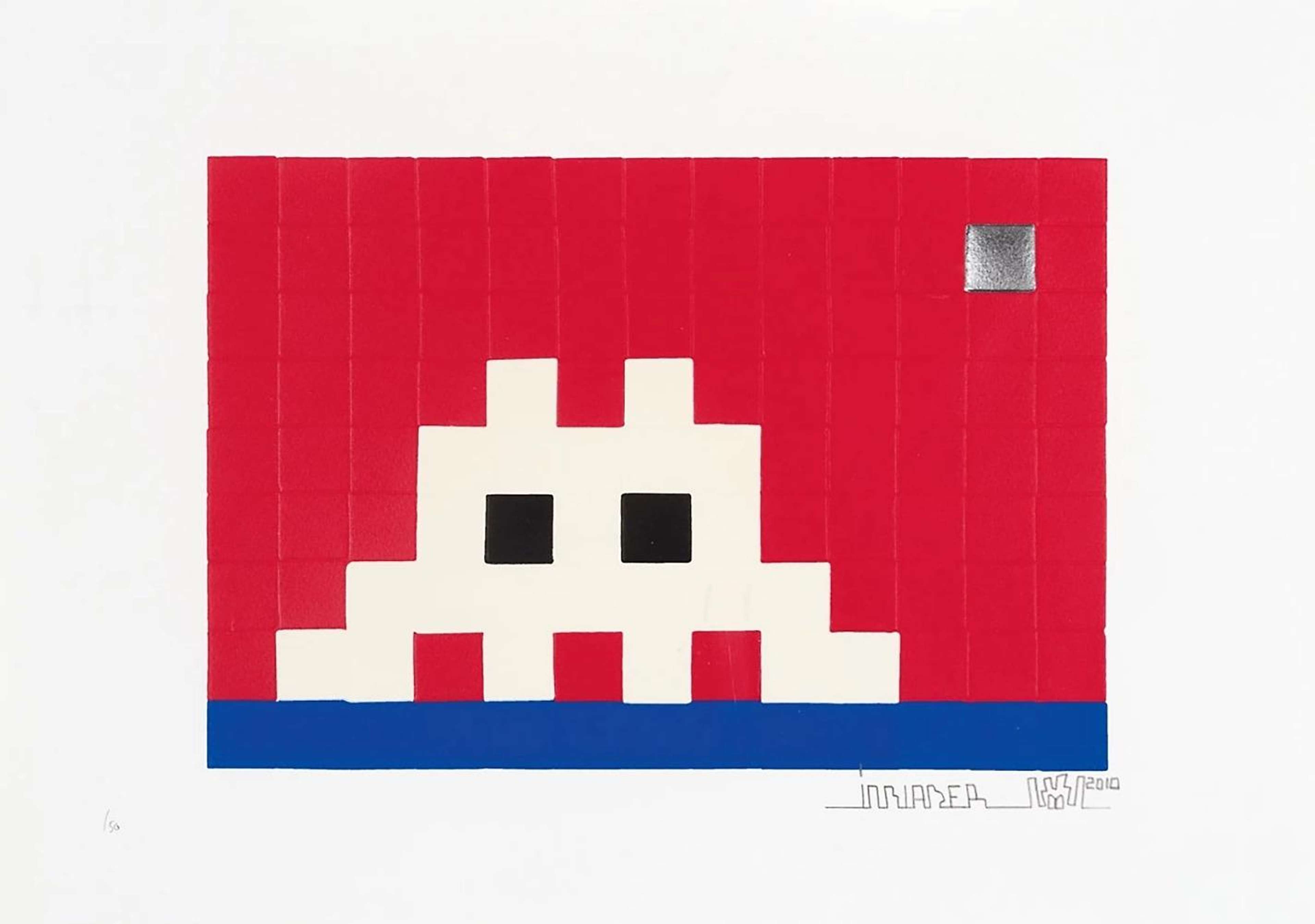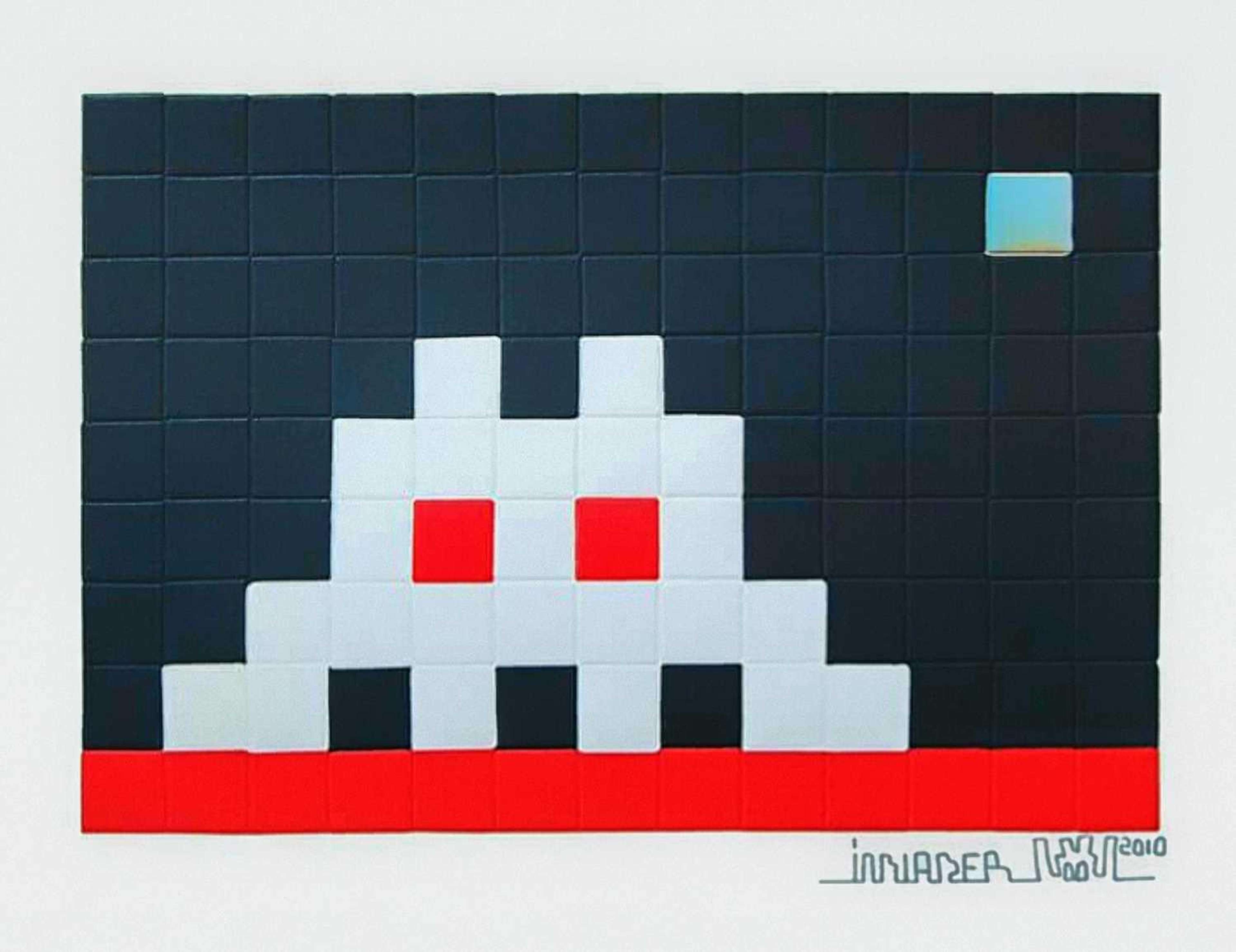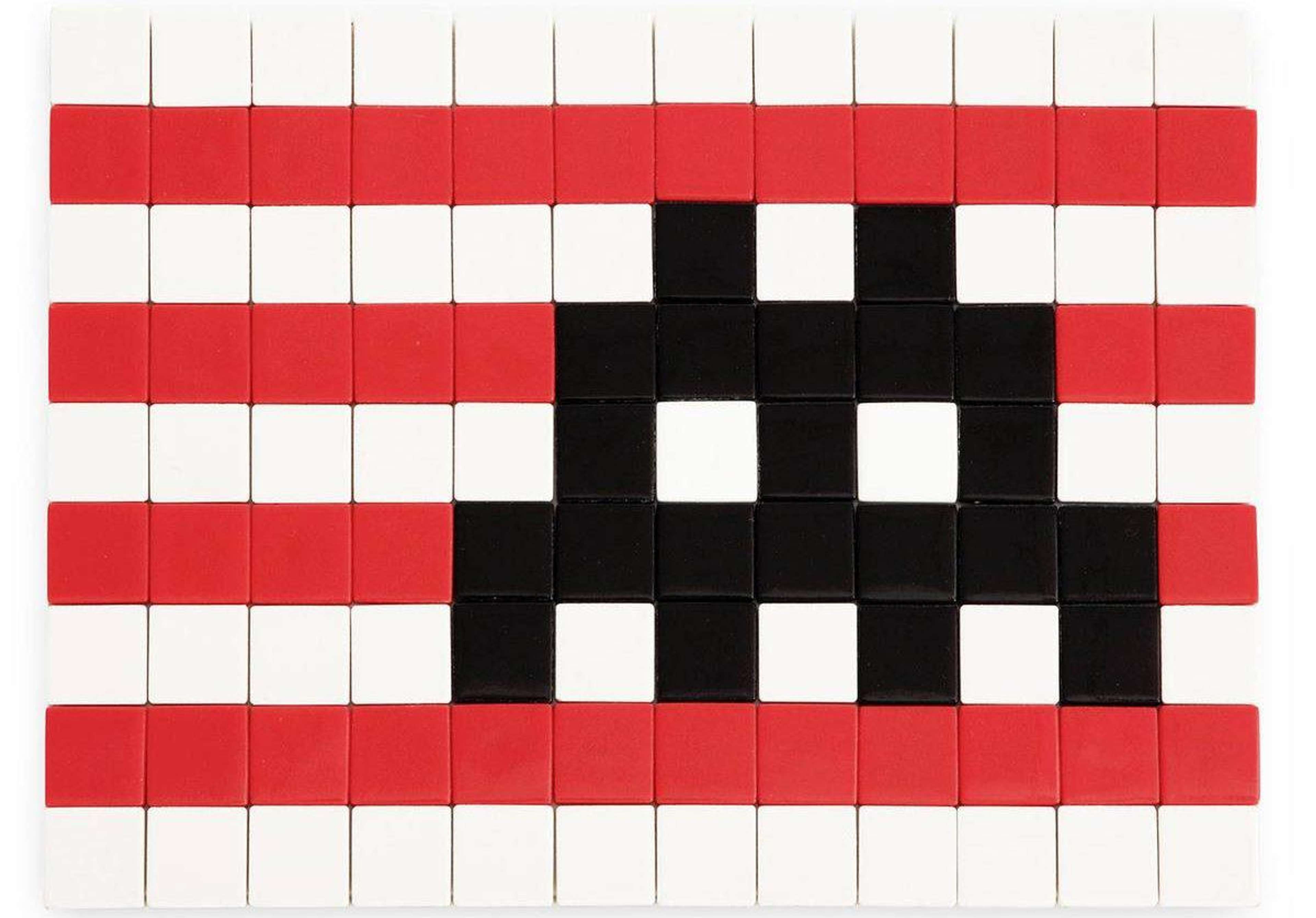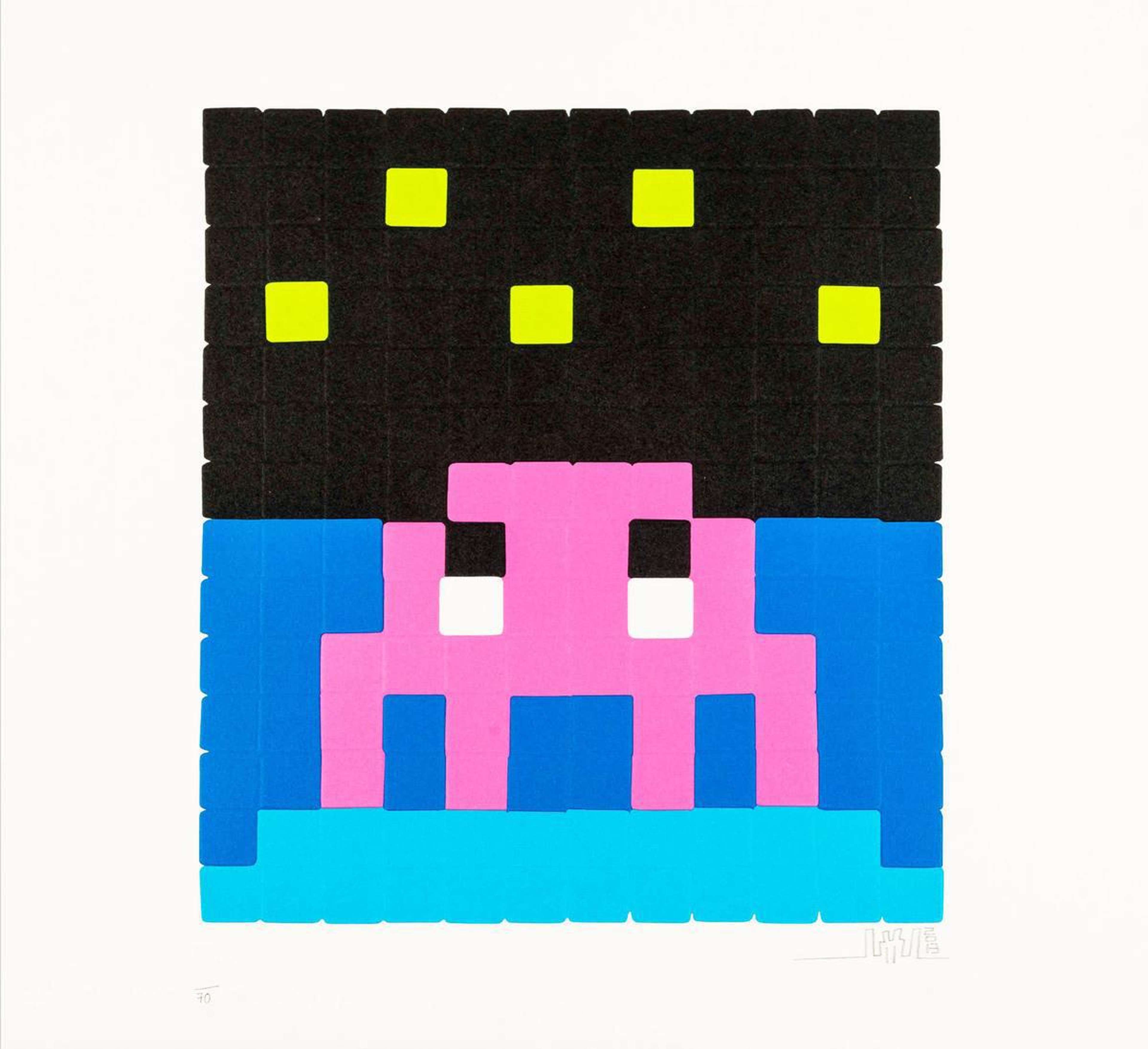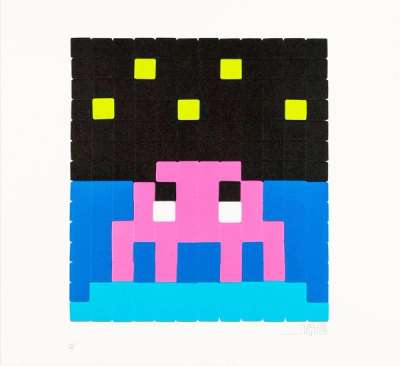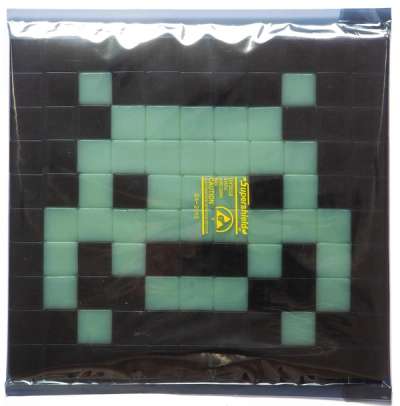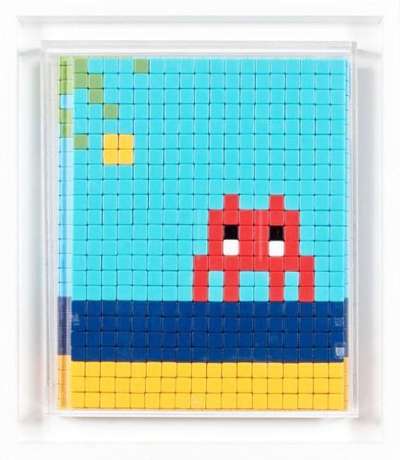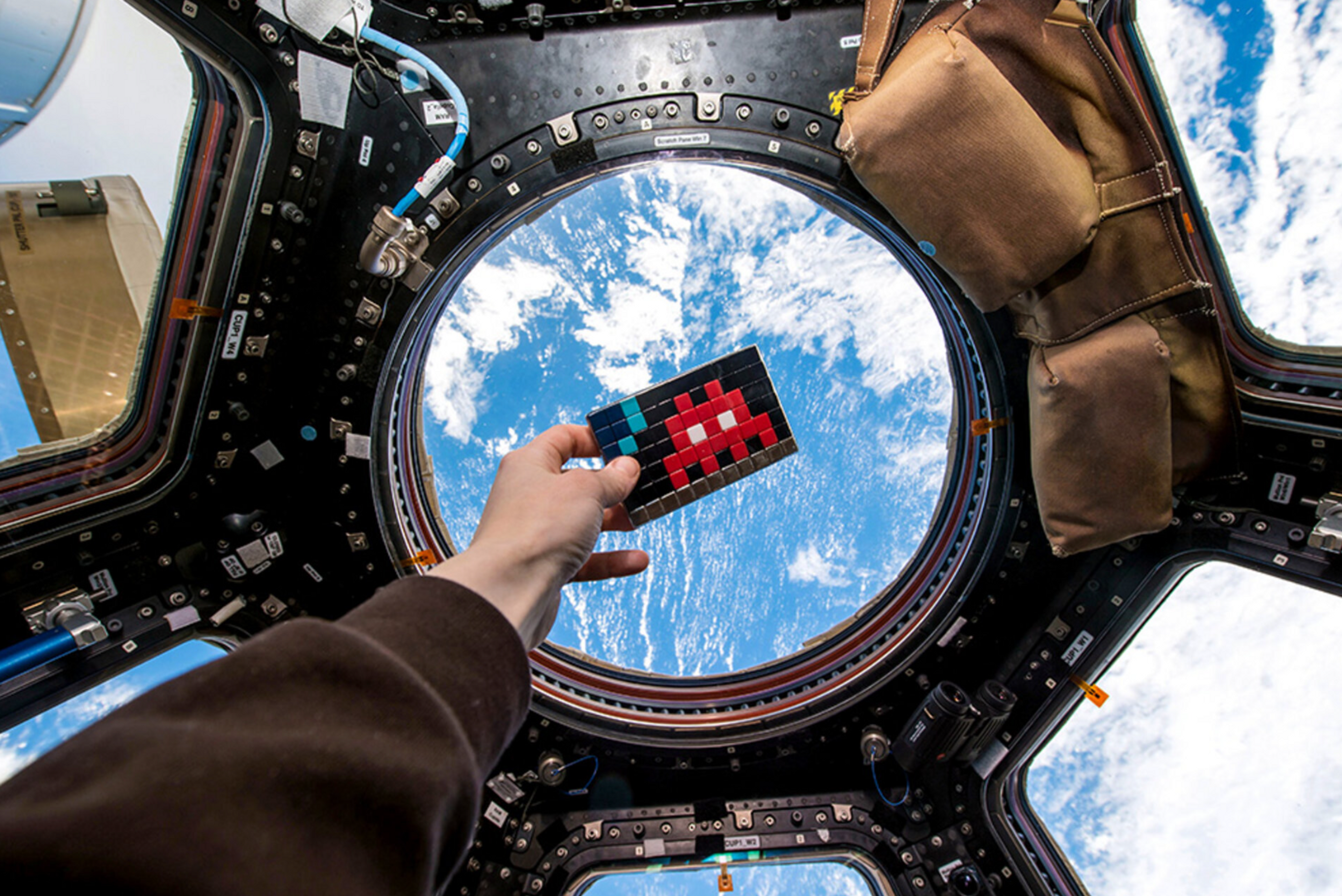 Space 2, Futura Mission © Invader 2014
Space 2, Futura Mission © Invader 2014
Invader
111 works
Street artist Invader’s ‘invasions’ have occupied the urban space of over 80 cities, including Paris, Bastia, Perth, Hong Kong, Rome, and Los Angeles. Living up to the artist’s name, some of Invader's works have made it into space itself.
Yes, that’s outer space, space.
Here is an overview of where the infamous Invader motif came from and what projects have made it into the stratosphere and beyond.
Where does the Space Invader Icon come from?
To best explain exactly what Invader is all about, we must take a trip to Japan.
The year is 1978. Osaka-born designer Tomohiro Nishikado has just completed an iconic arcade game that will change the gaming world forever. Its name? Space Invaders.
An overnight success, by 1982 Space Invaders had sold over 400,000 copies; now, almost 45 years after its release, it’s not only one of the most influential arcade games of all time, but an important milestone in contemporary design.
At the heart of the game are a series of iconic ‘alien’ characters. These were based on another significant cultural milestone, this time in the form of the ‘science fiction’ genre: H.G. Wells’ seminal novel of 1898, War of the Worlds.
 Image © (CC) BY-SA 4.0
Image © (CC) BY-SA 4.0But why is this relevant?
Since 1998, Invader has put up over 4,000 tile-based mosaics in over 70 cities around the world. He has named this ongoing artistic endeavour his ‘Space Invader’ project.
At the centre of each of his artworks – which the artist dubs ‘Invasions’ – is either a character from Nishikado’s Space Invaders, or a unique character inspired by arcade game culture or science fiction more generally.
Why did Invader choose the Space Invaders as his project’s central motif?
Simple. ‘They are the perfect icons of our time’, Invader argues; ‘A time where digital technologies are the heartbeat of our world’.
But – the reason behind this choice is cleverer than it first appears. Invader explains:
‘As these creatures are made of pixels they are in some sorts ready-made for tile reproduction.’ Also, he adds, ‘their names are literally predestined for the project I have pioneered: they are ‘Space Invaders!’.
Get it?
Art4Space (2012-2015)
In 2010, Invader installed over 20 of his ‘invasions’ in the southern American city of Miami. He had been invited to take part in the city’s international contemporary art fair by famed gallerist, Jonathan LeVine.
Invader wanted to take things further, though. Much further.
Noticing that Miami is located just down the coast from Florida’s so-called ‘Space Coast’ – a region located close to the Kennedy Space Center and Cape Canaveral Space Force Station – Invader knew exactly where his next target was.
Invader wanted to realise a long-held obsession: ‘returning’ one of his intergalactic creations to its celestial homeland; blasting his artwork into space.
In August 2012, Invader returned to Miami, erecting a further 44 of his Invasions on its streets.
Accompanied by an assistant and a journalist from the Miami Herald Tribune, and having carried out several flight simulations, the artist then travelled to the edge of the Florida Everglades.
Here, with the help of a high-altitude balloon, Invader would launch one of his artworks – Space 1 – into the stratosphere: the middle layer of the atmosphere, located some 60km from the earth’s surface.
Hampered by bad weather and scorching heat, the launch went ahead after several days of rescheduling.
After a flight time of 3 hours and 53 minutes, Space 1 completed a return trip to terra firma. Space Invasion status: Successful.
Space2ISS (2014)
Around a year after the successful launch of Space 1, Invader decided to up his game. This time around, his invasion of outer space needed to be bigger and more high-profile. As such, he enlisted the help of the European Space Agency (ESA) to help him realise his dream – to boldly go where no artwork has gone before: the International Space Station (ISS).
This goal, however, would be no mean feat. To send anything into space, it must conform with strict safety standards.
In July 2014, after a lengthy testing process, a new artwork was placed aboard the Ariane 5 – a heavy-lift space launch vehicle – bound for space. Docking at the ISS, the weightless artwork took on a life of its own, searching for the right spot for its installation…
During her 200 day-long mission, named Futura, Italian ESA astronaut Samantha Cristoforetti later installed the mosaic on Europe’s Columbus laboratory – part of the ISS – on the 12th of March 2015.
 Image © Invader 2014
Image © Invader 2014Under the Sea (2012)
It’s not just the depths of space that Invader has had his sights set on, though: the depths of the ocean have also been of great interest to him.
In 2007, Invader had thought about staging one of his ‘Invasions’ underwater. When he was ready to turn his plans into reality, however, he discovered the artworks of Jason deCaires Taylor, a British artist, environmentalist, and underwater photographer, who was represented by the same gallery as him.
The owner of the world’s first underwater sculpture park, located at Molinere Bay in the Caribbean sea, deCaires Taylor has used his work to foster awareness of ecological issues, such as biodiversity and the climate crisis. When erected in subtropical waters, deCaires Taylor’s sculptures, which often take the form of human figures, also serve a second function as artificial coral reefs
His work Submerged In The River Thames (2015), for example, features city workers in suits as well as figures riding horses that resemble oil pumpjacks, or ‘nodding donkeys’. Submerged in the waters of the Thames, as its name suggests, this artwork is only partially visible, and calls our attention to the possible effects of rising sea levels on the English capital.
Keen not to step on his submarine colleague’s toes, Invader contacted deCaires Taylor to ask if he would like to collaborate. The artist agreed.
As such, in 2012 three Invader works were installed alongside some deCaires Taylor sculptures at the bottom of Cancún Bay, off the western coast of Mexico. Invader named this series of Invasions his ‘Under The Sea’ project.
 Image © Jason deCaires Taylor / Underwater Sculpture in Cancun Bay © Invader 2012
Image © Jason deCaires Taylor / Underwater Sculpture in Cancun Bay © Invader 2012Invader’s Space Station (2024)
Invader has recently taken his art to a new level with an ambitious exhibition in Paris, titled Invader’s Space Station, exhibited in early 2024. Located at 11 Rue Béranger, this large-scale installation conquered nine floors and featured hundreds of his iconic pixelated mosaics inspired by the classic Space Invaders arcade game. Designed to mimic a "mother ship", the exhibit aimed to immerse visitors in a cosmic atmosphere, showcasing previously unseen mosaics, large-scale installations, and immersive environments. Known for his urban "invasions", Invader has previously explored space themes through smaller installations meant to evoke extraterrestrial imagery. However, this latest project was his most extensive to date, transforming an entire venue into a unique and expansive universe of his signature works
To read more about the top 10 coolest places to find an Invader, see our article here.

